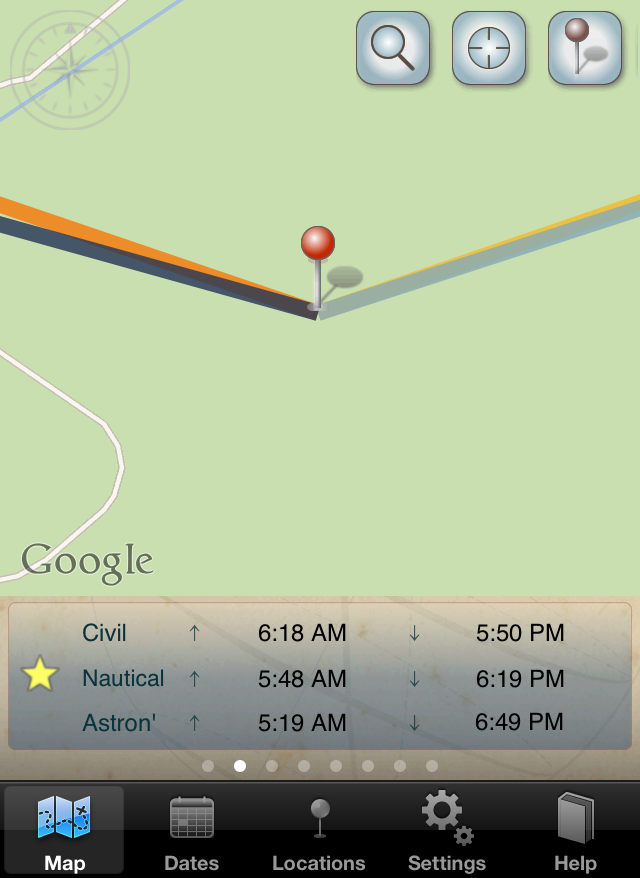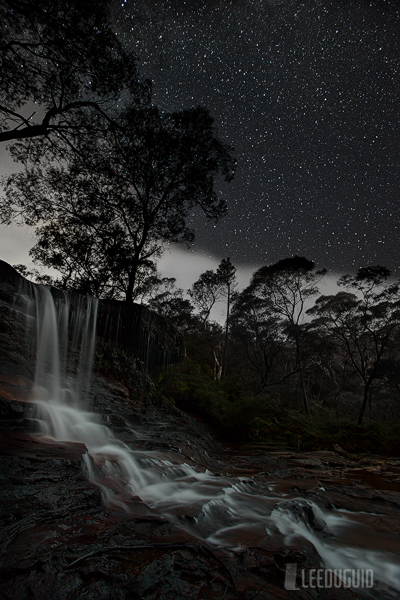I spent a long evening on my own up in Blue Mountains National Park in an attempt to nail this shot. I had attempted this before with mixed results so I went back with some lessons learnt and tried again. Arriving at Wentworth Falls in plenty time I knew sunset would be nothing special but that was not why I was there. The sky was clear and perfect for the star shot I had envisioned. Setting up my tripod as the sun went down I first concentrated on getting the composition perfect. Here’s a step by step of how I photographed this shot.
1. Composition – I knew what worked from having shot here previously so with that in mind I literally set up my tripod in the same spot. I then further refined it as I normally do making sure there was enough of the waterfall to the right, the waterfall was big enough in the frame, and the balance between trees and sky was just right.
2. Exposure for the foreground – With my focus set to a third into the image I began to play with shutter speed, aperture, and ISO to achieve a natural looking exposure with plenty detail in the darkest areas of the foreground. I settled on F11, 30s, ISO 400, photographed at 5.52pm – 29 minutes after sunset
3. Setup aperture wide open (F4) to get as many stars as possible and focus at hyperfocal distance using last available light.
3. Wait – This is the fun part, thankfully I had mobile phone internet access so I could catch up on emails whilst waiting for it to get dark enough for the stars to really pop.
4. Once the sun has passed well below the horizon, between 12 and 18 degree’s below in actual fact according to the Photographer Ephemeris, it was dark enough to photograph a second exposure for the sky. Note Civil sunset at 5.50pm is when the sun dips below the horizon and is out of visible sight. Nautical sunset (getting dark) the sun is between 6-12 degrees below the horizon and Astronomical sunset the sun is 12-18 degree’s below the horizon, plenty dark enough to shoot stars.

The sky was capture with F4, 30s, ISO 12800, at 6.37pm. The ISO might seem crazy high, and in retrospect it probably was a touch too high however it is better to correctly expose the sky rather than to under expose it and try to recover it in post. This is when you get horrible noisy images and is a definite no no. The shutter speed was the maximum amount of time I had to shoot before movement of the earth became visible in the stars (before the stars appeared to be moving within the image).
I hope that gives you an insight into how I captured this image. Please like and share this post with others who might be interested.







Hi Lee,
Thanks for the background info of this image. it’s a great shot! – so different to the usual afternoon light images I’ve seen of Weeping Rock. I live up in the mountains at Springwood & am planning on shooting the waterfalls & cascades around there later this week. Have recently purchased a Hoya NDX400 ‘black glass’ filter so am keen to put it to use.
Cheers,
Vic.
Thanks Vic, I hope your shoot goes well. It’s a beautiful spot.